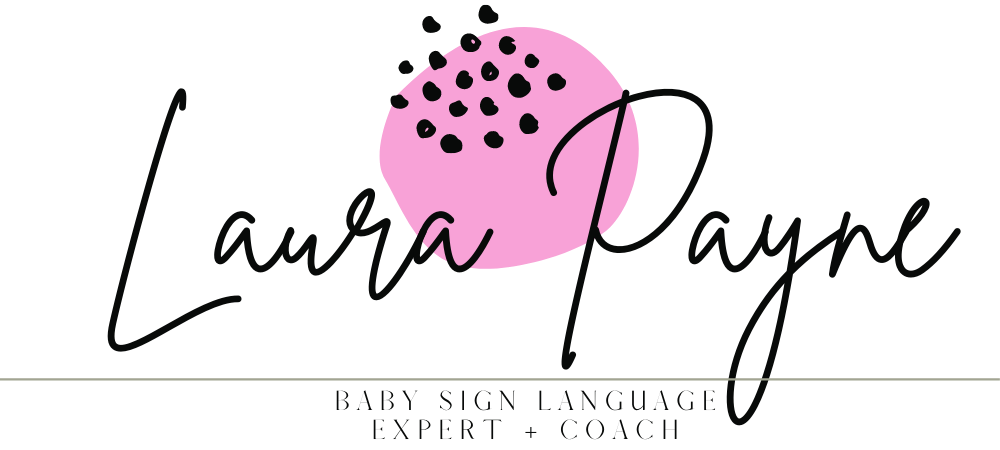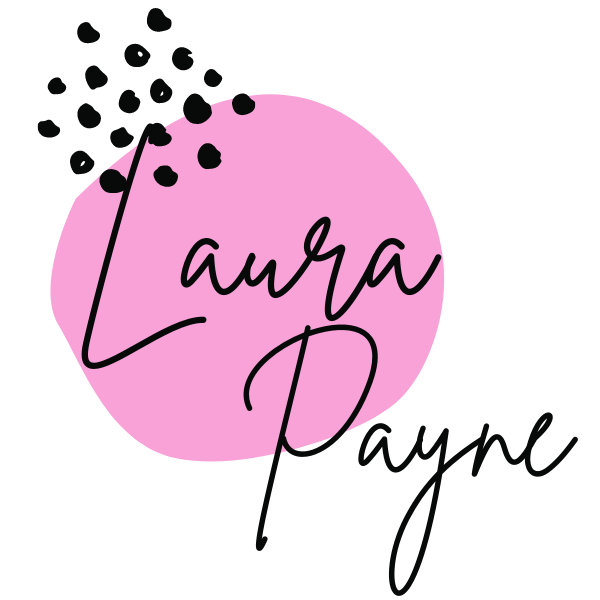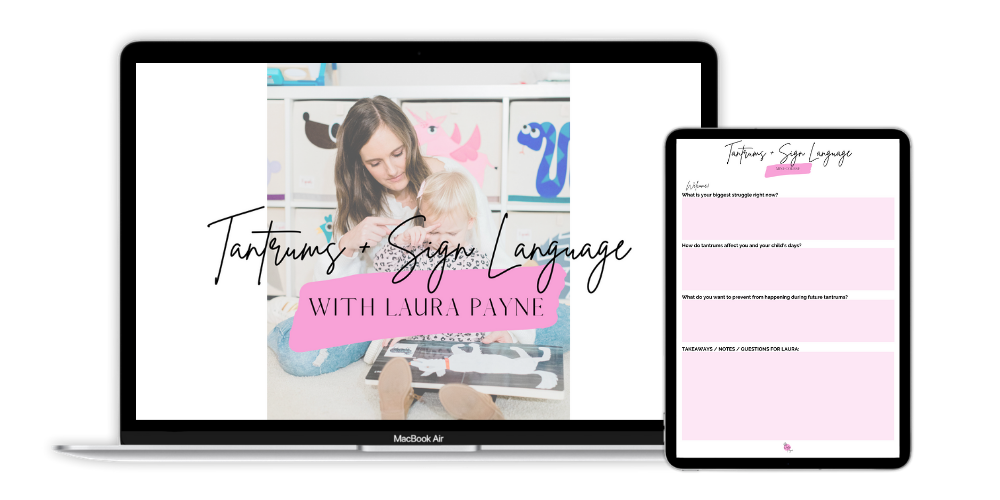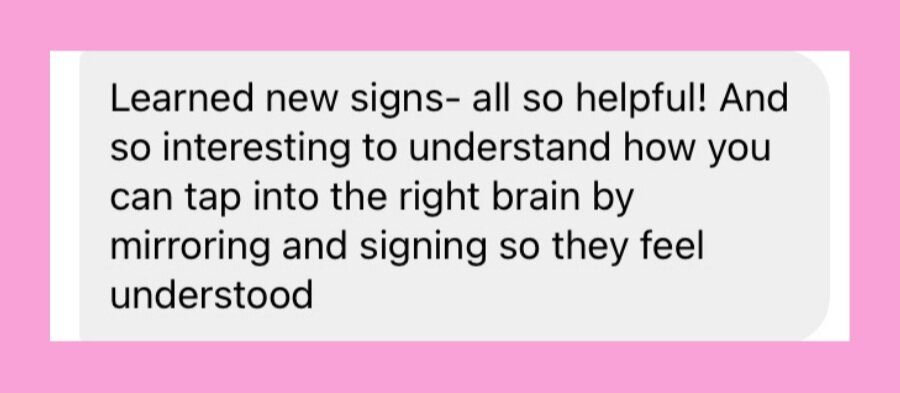Ready to learn sign language to manage temper tantrums?
Navigating the imbalance in your toddler’s brain just got a whole lot easier when ASL signs are utilized alongside proven strategies.
have you heard the myth?
Parents everywhere will tell you tantrums and toddlerhood go hand-in-hand…
“Terrible Two’s” and “Three-nager” are expected, and you’re met with nod’s of empathy.
But let me ask you this…
“Would you like to LESSEN the duration and intensity of these tantrums, moments of intense frustration, and high emotion?”
If you’re shaking your head yes… you ARE shaking your head yes, right?!?!
Then get ready, because if you choose to use your child’s brain development to your advantage, you can help your child recover from a tantrum more quickly with a few steps, and a few ASL signs!
⚠️ WARNING! ⚠️
There are also some other amazing side effects to using ASL signs with your child…
Not sold yet?
Let me pull back the curtain and describe what my daughter’s tantrums look like when I implement ASL signs…
The signs and techniques help her “wake up” from the flood of emotions she is experiencing.
She is able to recover from severe tantrums more quickly than when I don’t implement sign language.
Her meltdowns are less likely to result in a tantrum when I use sign language.
Afterwards, we are able to continue using sign language to help transition to repairing our connection.
introducing…
A pre-recorded mini-course on how to effectively implement sign language during your child’s tantrums for faster recoveries.
From how your child’s brain is wired at this age and how sign language naturally plays into that development.
I’ve taken everything I’ve learned about toddler behavior and tantrums, and combined it with my own expertise in ASL and teaching young children.
I’ve broken everything down for you to be able to implement right away, so you can help your child recover from tantrums faster and with less intensity.
the end result?
👉 Confidence and calm as you navigate your toddler’s disapproval of the butter melting on the warm piece of toast.
👉 A toddler who feels more understood and heard.
Check out these take - a - ways from other parents:
Here are just a few a-ha moments you’ll experience:
What the inner-workings of your child’s brain are really doing.
How the brain responds to sign language better than spoken language during high emotions.
15 ASL signs related to your child’s feelings, their desires, and unwanted behaviors.
Actionable steps to take to help your child recover.
but wait... there’s more!
To make sure you have EVERYTHING you need to take action and help guide your toddler through a tantrum more effectively, you’ll also get access to a special bonus…
Tantrum + Sign Language workbook
Don’t watch this mini-course and remain idle. This workbook includes prompts to encourage you to work through the stumbling blocks you are experiencing during your child’s tantrums, take meaningful notes during the videos, and plan actionable steps to implement going forward!
ready to help your toddler recover from tantrums faster?
You have questions.
I have answers.
-
We will dive into this during the training! Basically, your child's brain cannot process auditory information as clearly as it can nonverbal communication during a tantrum. Hence, sign language is very effective in de-escalating your child's emotions and helping them recover and connect faster.
-
Your baby or toddler has more to communicate with you than they can verbally at this young age. Due to gross motor skills maturing earlier than speech skills, your child can actually use sign language before they can speak (or sign more than they can say verbally once spoken language begins). This will lead to more confidence in your child, fewer frustrations and meltdowns, and more positive interactions within your family unit. To learn how to do all of this, please check out my "Look Who's Signing Now" course!
-
Actually, quite the opposite! Sign language is a true language, just like Spanish, French, or Mandarin. Sign language has been proven to support and facilitate spoken language skills.
-
Hindsight is 20/20. I wish I knew about this BEFORE my daughter's tantrums escalated, which is why I have created this mini-training. If your baby is near 9-10 months old, this is a great time to be able to practice the techniques and signs before you're feeling like you're treading water. If your child is older, and you're already in the thick of it, it's not too late at all! If your baby is younger, you can grab it now to watch when you're ready.
-
Yes! This mini-course will discuss techniques and strategies alongside ASL signs. If you're also looking to use sign language outside of moments of frustrations and tantrums, I recommend you check out my "Look Who's Signing Now" course.
-
You will have access to a portal, where all resources, tutorials, and trainings are kept. You will have access to all materials FOREVER! You are free to rewatch, revisit, and review everything you learned as often as needed.
Imagine how much different your days could look if…
You saw the frustration building in your 2 year old trying to build a tower without success, and are able to help her before her emotions fully took over
Your 1.5 year old throws a fit, wanting to go outside during bad weather, and you help him recover in less than 3 minutes
Even though you didn’t see what happened, you are able to connect with your 3 year old within a minute, and then learn he stubbed his toe and wants a kiss
When it’s time to leave the park, your 14 month old feels heard and understood when she has a meltdown, wanting to keep swinging



















